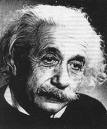 |
Innovators And Innovations Ultimately, it will be the ability to have a positive impact on the health of people and society that will prove whether the scientific effort and investment have been worthwhile. Therefore, it is important that research related to the human genome is carried out responsibly and within a society that is open to it. Genomic study will have a huge impact on the ability to assess risks posed to individuals by exposure to toxic agents. This knowledge will address DOE's mission to understand the effects of low-level exposures to radiation and other energy-related causes especially in terms of risk of cancer. Genetics will help us understand human evolution and the common life that we all share in biology. In the Human Genome Project human evolution research is study evolution through germline mutations in lineages, study migration of different population groups based on female genetic inheritance, study mutations of the Y chromosome to trace lineage and migration of males, and compare breakpoints in the evolution of mutations with ages of populations and historical events. The Human Genome Project (HGP) has created the field of genomic understanding genetic material on a large scale. The medical industry is building upon the knowledge, resources, and technologies emanating from the HGP to further understanding of genetic contributions to human health. As a result of this expansion of genomic into human health treatment, the field of genomic medicine has been born. Genetics is playing an increasingly important role in the diagnosis, monitoring, and treatment of diseases. All diseases have a genetic component, whether inherited or resulting from the body's response to environmental stresses like viruses or toxins some of the people that dedicated there life to find the code of life to help the people. The double helical structure of DNA was discovered in 1953 by James D. Watson and Francis H.C. Crick with the invaluable collaboration of the x-ray crystallographer Rosalind Franklin. Watson and Crick shared the 1962 Nobel Prize in Physiology or Medicine with Maurice H.F. Wilkins.
|